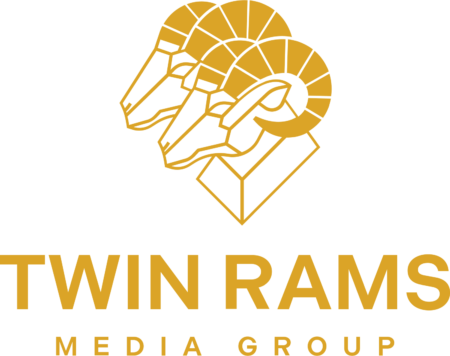Most social media marketing professionals and entrepreneurs know that managing social media accounts can be taxing. It involves plotting content, creating content, scheduling posts on social media platforms, engaging with the audience, and so much more. However, social media calendars can level the playing field for everyone. If you’re a busy business owner, a part of a small marketing team, or a sole social media manager, you might need one of these.
What is a social media calendar?
A social media calendar is a detailed and strategic document containing an overview of a person or a business’s upcoming social media content plan across various social media platforms. Businesses, organizations, entrepreneurs, and content creators commonly use a this type of calendar to plan and schedule social media content and make sure everything is aligned with certain goals or campaigns. This serves as a roadmap for social media strategies, helping managers and specialists organize and manage posts over a specific period of time.
A social media content calendar can be in the form of a spreadsheet, document, or interactive calendar panel on an online platform. The calendar typically includes details such as:
- the date and time of posts
- the content, text, or copy to be shared
- the platform(s) it will be posted on
- any accompanying media or links
- status updates to know if a specific post has gone live
- and other miscellaneous details based on the user or business
This helps people stay organized, consistent, and accurate as they create social media content for their business or brand.
Nowadays, there are various tools and software available that can help social media managers create and manage a social media content calendar. They can range from basic spreadsheets to specialized social media management platforms. These tools often provide additional features such as analytics, post-scheduling, and collaboration capabilities.
How to create a social media content calendar
Creating a social media content calendar involves several steps to help you plan, organize, and schedule your posts effectively.
Here’s a step-by-step guide on how to create a social media content calendar:
- Step 1: Define Your Goals – Clearly outline your social media marketing goals. Are you aiming to increase brand awareness, drive website traffic, or boost engagement? Understanding your objectives will guide your content creation and posting strategy for this calendar.
- Step 2: Know Your Audience – Identify your target audience and understand their preferences, interests, and behaviors on social media. Tailor your content to resonate with your audience and provide value.
- Step 3: Do an Audit and Choose Social Media Platforms – It’s also necessary to do an audit of your current social media platforms or content. Are they getting enough engagement? Is the content effective? This will help you decide if you should continue with a platform or choose others. Make sure to focus on platforms that align with your business goals and where your target audience is active and likely to engage.
- Step 4: Outline Content Categories – Identify key content categories that align with your brand and resonate with your audience. These categories can include promotional content, educational posts, user-generated content, industry news, and more. It’s also important to remember the social media rule of thirds, where brands are recommended to create ⅓ of posts promoting products and services, ⅓ interacting with the audience, and ⅓ of sharing industry news or related content.
- Step 5: Select Content Types – Think about diversifying your content by choosing different content types. This includes images, videos, infographics, blog posts, polls, and more. Variety keeps your content interesting and engaging for the audience.
- Step 6: Create a Detailed Calendar Template – Use a spreadsheet or a dedicated content calendar tool. Create a template with the necessary details in each column. Your social media calendar can include details like date and time, platform, content type, caption, links, media, and any relevant hashtags or mentions.
- Step 7: Plan Content in Advance – Plan your content, considering key dates, events, and holidays relevant to your audience and industry. This ensures your content is timely and aligned with broader trends.
- Step 8: Collaborate with Your Team – If you have a team, collaborate on content creation, approval, and scheduling. Ensure everyone is on the same page regarding brand voice, messaging, and overall social media strategy.
With a comprehensive social media content calendar, you can start scheduling posts, engaging with the audience, monitoring performance, and boosting your social media presence.
Benefits of having a social media calendar
Having a social media calendar offers several benefits for individuals and organizations engaged in social media marketing. If you’re handling multiple social media platforms for your business or brand, a calendar is a must.
Here are some of the key benefits and advantages of using a social media content calendar:
Consistency
A calendar helps maintain a consistent posting schedule. Regular and predictable postings can improve audience engagement and loyalty. It also improves a brand’s reputation and image among the audience.
Time Efficiency
Planning and scheduling posts in advance saves time. This can be incredibly beneficial for small marketing teams or solo entrepreneurs who are busy with their business most of the day. With a social media content calendar, you can allocate specific time slots for content creation and scheduling. This allows teams to focus on other aspects of your business.
Strategic Planning
A calendar allows you to align your social media content with broader marketing goals, product launches, campaigns, or events. This ensures that your social media efforts contribute to your overall business strategy and that your online presence coincides with what you’re striving to achieve over a given period of time.
Content Variety
Planning ahead enables you to diversify your content and be more creative. You can include a mix of promotional content, educational posts, user-generated content, and other types of posts to keep your audience engaged. You can also include holiday posts or themed posts that are relevant to current events or times of the year.
Social Media Trend Monitoring
Having a social media content calendar can also help you keep up with social media marketing trends. You can research and document these trends on your calendar and use them as a guide. Apply these trends to upcoming social media content to connect more with the audience, stay relevant, and boost exposure.
Team Collaboration
If multiple team members are involved in social media management, a calendar serves as a centralized plan that everyone can use and reference. Content writers, social media specialists, and managers can all have a central file that they can access, edit, and approve. This helps ensure consistency in messaging and branding, as well as approval hierarchy or authority.
Adaptability
While planning in advance, you can also stay flexible. If there are timely events or rising topics that you want to leverage, a calendar can help you adjust and anticipate other events accordingly.
Analysis and Optimization
After the scheduled period, you can also use the social media content calendar to analyze the performance of your posts. This analysis helps you understand what works and what doesn’t, allowing you to optimize your future content strategy and social media posts.
Audience Engagement
By planning content in advance, you can strategically engage with your audience. This may include running contests and giveaways, responding to comments, answering inquiries and direct messages, or participating in relevant conversations regarding your niche or a trending topic.
Time Zone Considerations
If your audience spans different time zones, a social media calendar can help you schedule posts at times when your audience is most active. This further maximizes reach and engagement for your brand.
Reduced Stress
Knowing that your social media content is planned and scheduled can also reduce stress and workload. This allows you to focus on other aspects of your business without the constant pressure of creating and posting content on the fly. This is a good advantage for many busy marketing teams.
Improved Workflow
A calendar improves the marketing workflow. With a centralized calendar, social media managers can create content, schedule dates, attach photos or other media, insert links, take note of holidays or events, and so much more.
Influencer Marketing Management
Having an organized and detailed social media calendar also means you can manage influencer marketing posts and sponsored posts much better. This gives you the chance to have an overview of what influencer posts are going live, which have been published, what content or products they shared with their audience, and more.
In summary, a social media calendar is a valuable tool for business owners, marketing teams, and managers. It enhances the efficiency, organization, and strategic impact of your social media marketing efforts.
Ready to boost your social media efforts? Talk to Twin Rams Media Group today and let us help you with your strategy!
References:
https://blog.hootsuite.com/how-to-create-a-social-media-content-calendar/
https://sproutsocial.com/insights/social-media-calendar/


